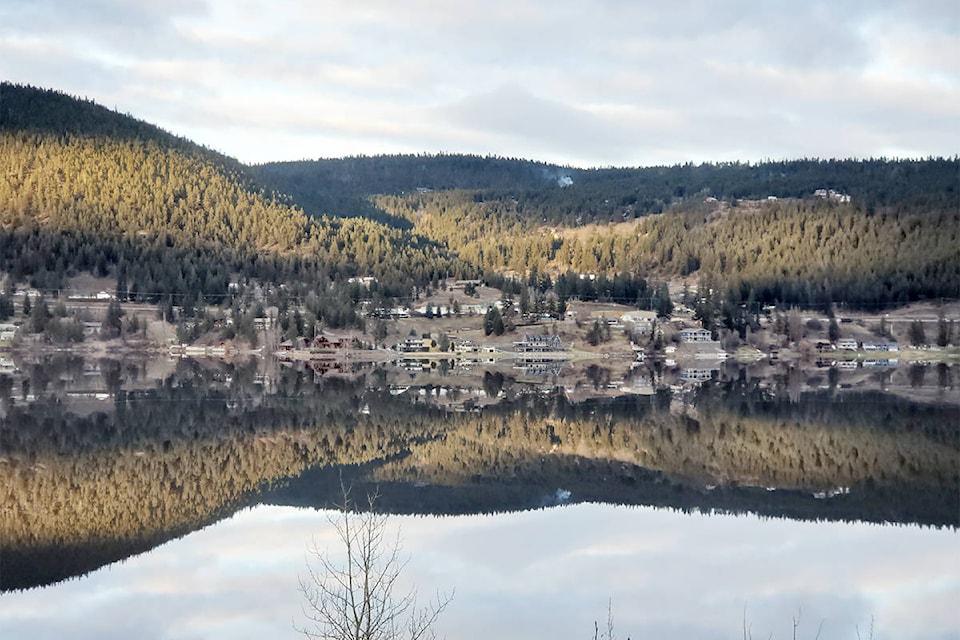Aquatic plants in Williams Lake have been a topic of discussion in recent years.
Wanting to harvest some of the ‘weeds,’ the city purchased a used lake weed harvester which was refurbished and ready for the water in September.
In order to use the machine, the city also pursued a permit with the Ministry of Forests, Lands, Natural Resource Operations and Rural Development (FLNROD).
In November, the city received a limited permit to do some areas close to Scout Island and in two years the permit will be reviewed.
Read more: Lake weed harvester ready for use in Williams Lake
The Tribune reached out to the ministry for an interview about the lake and was asked to submit questions.
Here are the questions with the full e-mailed response from the ministry.
In doing this interview, it was apparent that calling the aquatic life weeds is not accurate, but that was how the questions were posed.
MLY: How is Williams Lake classified?
FLNROD: Williams Lake is classified as a eutrophic lake. In general eutrophic lakes have high nutrient levels making them very productive which is indicated by the large plant and algal communities in the lakes.
The vegetation in these lakes allows them to support healthy fisheries, and can attract wildlife and waterfowl. Historic data from Williams Lake indicates that it was eutrophic prior to the area being settled. This suggests that the plant and algae communities present in the lake may be endemic.
MLY: What grows in the lake vegetation wise?
FLNROD: An aquatic plant survey was conducted on Williams Lake in September 2016.
The results of this survey indicate that Williams Lake has a diverse community of aquatic plants, including both submerged and floating leaf plants.
All of the plants recorded in the survey are species native to the area, no invasive species were found.
MLY: What could contribute to the advance of weeds in the lake?
FLNROD: Many aquatic plants naturally have a cyclical growth cycle whereby they will grow and multiply, and then recede again.
These cycles can occur over a span of weeks, months, a single growing season, or over several growing seasons.
Aquatic plants, similar to terrestrial plants, needs nutrients to grow. If nutrients are in higher supply the plants may be able to grow at increased rates.
MLY: Have the weeds grown in a massive way as observed by ministry staff?
FLRNOD: Ministry staff have not reported a significant change to aquatic plant communities on Williams Lake.
MLY: What kind of sampling, monitoring of the lake is done by the ministry?
Williams Lake is part of both our long term lake trends and our volunteer lake monitoring programs. under the long term lake trends program, ministry staff conduct twice yearly sampling of the lake for multiple parameters.
Under the volunteer lake monitoring program, volunteers collect bi-weekly field parameters.
The volunteer lake monitoring data is currently being compiled into a lake report that should be available to the public in 2021.
For more information, please visit the following website: www.gov.bc.ca/lake-monitoring.
MLY: Could this year’s historical level of the lake contributed to any changes people are seeing as far as weeds?
FLRNOD: Aquatic plants are one of the better indicators of changes to water levels.
Typically, there will be a decline in plant diversity as water levels rise. This is because floating leaf plants need to float on the surface to get the sunlight needed to grow and as water levels rise the plants may no longer be able to reach the surface.
Over time if the water levels recede to normal the plants will recover, and should the water levels remain consistently higher, the plants will adapt and grow taller, eventually re-establishing those plant communities.
MLY: Anything you would like to add about the lake?
FLNROD: Many species of aquatic plants can grow from a cutting, so manual removal of plants may actually encourage their spread around the lake.
Obtaining a plant identification prior to attempting to remove plants by hand is recommended.
Also, be sure to clean, drain and dry boats after exiting any lake to prevent the spread of plants between lakes.
Maintaining a riparian area along the lake shore, particularly in residential areas, is the best way to prevent excess nutrients from entering the lake.
Read more: City of Williams Lake receives limited permit to use lake weed harvester
news@wltribune.com
Like us on Facebook and follow us on Twitter
